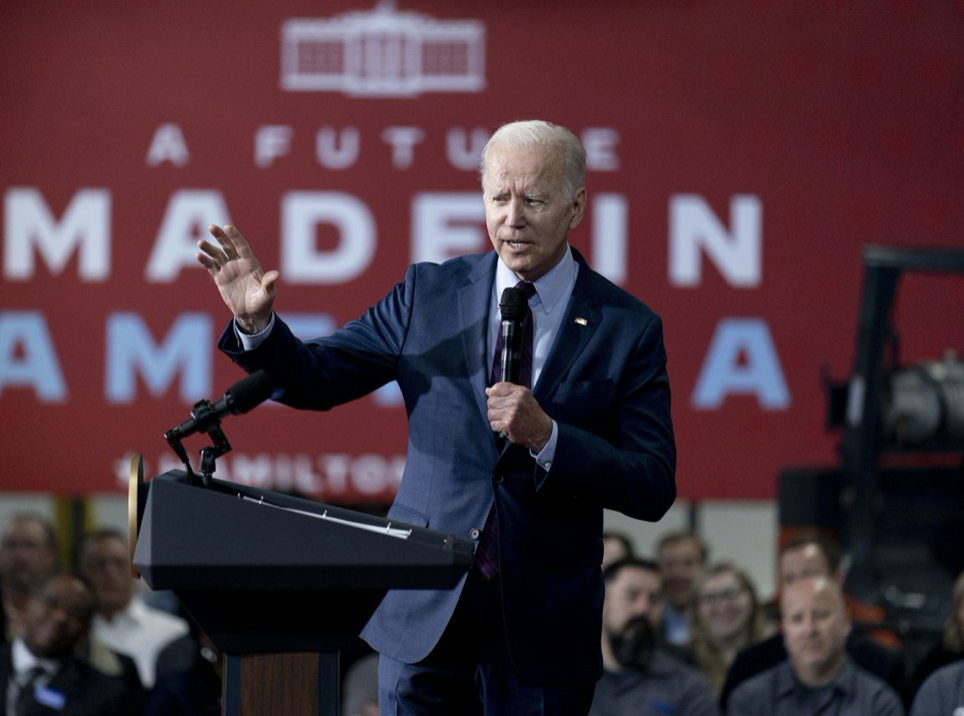By: &
Most discussion about the possibility of recession focuses on the Federal Reserve’s monetary policies. But there are also factors on the supply side of the economy that may tip the U.S. economy into a recession. Among them are the tax and regulatory policies of the Biden administration.
A recession is sometimes defined as a decrease in employment. Other times it is defined as a reduction in real gross domestic product for two quarters or more. Strong labor-force and productivity growth are supply-side factors that make a recession less likely, as is recovery from the pandemic. But increased regulation and increased taxation of capital—two Biden administration policy priorities—are supply-side headwinds that make recession more likely.
Adult population growth is normally an economic tailwind. But it has fallen substantially, from above 1% between 1980 and 2018 to about 0.4%. President Trump’s restrictive policies on even legal immigration are partly to blame for this decline. President Biden has done little to reverse those policies.
Recovery from the pandemic has also been a tailwind. It will continue to lift employment, but most of the recovery in employment has already occurred. Workers lost skills and capital laid idle during the pandemic. These are recovering, though strictly from an accounting point of view, their recovery won’t be fully recognized in the growth data.
GDP and productivity levels were exaggerated during the pandemic as many goods were unavailable or low in quality in ways the GDP data didn’t capture. Even though public-school teachers stayed home, for instance, national accountants assumed that they were as productive as ever merely because they continued to be paid. As they get back to traditional teaching, this won’t be officially recognized as economic progress for the same reason the pandemic regress was never acknowledged.
In normal years, workers’ productivity rises by about 1%. That alone is a strong economic tailwind causing GDP growth, making recession by the reduced GDP definition less likely than otherwise. Unfortunately, Mr. Biden’s economic policies will likely cause productivity growth to fall. A 2020 analysis by one of us (Mr. Mulligan) and three co-authors concluded that Mr. Biden’s economic agenda would cause full-time equivalent employment per capita to be 3.1% lower than otherwise and real GDP per capita to be 8.5% lower than otherwise. If that effect were spread over five years, the reductions relative to the baseline growth would be 0.6% and 1.7% a year, respectively. That by itself makes a recession likely in one of those five years.
Mr. Biden’s regulatory agenda seems to be going ahead as expected. The good news is that the Senate rejected David Weil, the president’s nominee to the Labor Department’s Wage and Hour Division. But Mr. Biden’s mask mandates offset that good news by disrupting hiring and employee retention when supply chains are already strained. His regulatory agenda will likely cause employment growth to fall by 0.2 percentage point a year and real GDP growth to fall by 0.7 point a year.
Although Mr. Biden’s Build Back Better bill would increase taxation of capital, it’s unlikely to pass. High inflation, however, is increasing taxation of capital without any action by Congress. Mr. Biden is almost certain to let temporary capital-taxation provisions in the 2017 tax cut law expire. The effect will be to reduce growth of real GDP by about 0.4 percentage point a year.
The combined effect of increased regulation and increased taxation of capital is a reduction in employment growth by about 0.25 percentage point a year and of real GDP growth by about 1.1 points a year.
Taxation of labor is a wild card. The $300 weekly unemployment bonus created an implicit tax on work: If you got a job, you lost the bonus. Because that bonus expired last summer, the implicit tax rate on work fell. Unfortunately, when economies enter recessions, politicians of both parties, wanting to “do something,” typically expand unemployment benefits. If that happens this time, it could easily and quickly reduce employment by 1% or more. On the other hand, various federal health-insurance subsidies are about to expire. Letting them die will encourage work.
Viewed only from the demand side, a recession seems reasonably likely. Unfortunately Mr. Biden’s supply-side policies seem tailor made to encourage one.
To see this article in its entirety and subscribe to others like it, choose to read more.
 Listen Online
Listen Online Watch Online
Watch Online Find a Station in Your Area
Find a Station in Your Area








 Listen Now
Listen Now Watch Online
Watch Online
